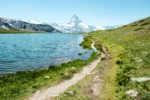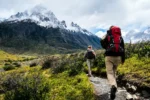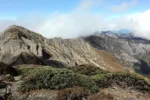How is hiking different from backpacking, trekking, thru-hiking?
This post may contain affiliate links. This means that we may receive a small commission from purchases through those links. Read more in our affiliate disclosure.
Is it just a hike, or are you embarking on a real backpacking expedition? The difference is more profound than you think.
Hiking involves day trips in nature, returning home by evening with lightweight gear. Backpacking extends this experience with overnight stays, requiring more gear and endurance. There are a number of sub-categories of backpacking: Thru-hiking covers entire long trails in continuous journeys, trekking involves long-distance adventures through diverse terrains, mountaineering tackles high-altitude climbs with technical skills, and bikepacking explores nature on a bicycle. Each activity requires specific gear and preparation for a safe and enjoyable adventure.

What is the difference between hiking and backpacking?
Hiking
Hiking is walking in the countryside or wilderness for pleasure. Imagine setting out on a serene trail to immerse yourself in nature, only to return to your cozy home by evening. Day hikes are usually completed within a single day. Distances can range considerably—from a few miles to a dozen or so—and they’re often close to populated areas, making these escapades accessible whether you’re in a bustling city or a quiet town.
Day hiking offers flexibility. You can choose your own pace, decide where to take breaks, and even change your plans halfway through. Planned a 10-mile hike but spot a scenic 5-mile loop? No problem, switch it up!
Comfort is key. Hiking boots are designed to be lightweight and flexible, supporting your feet without weighing you down. This is particularly beneficial for newer hikers or anyone who enjoys feeling unobstructed.
Backpacking
Backpacking involves hiking with gear, food, and supplies needed to stay out in the wilderness for one—or several—nights. It’s like carrying your home on your back, allowing you to reach destinations day hikers can only dream about.
Extended time in nature means a heavier load, requiring substantial physical endurance. Modern advancements in gear make this manageable. Nowadays, you rarely need to carry more than about 30 pounds.
Backpacking boots are sturdier and provide more ankle support, with a higher cut and aggressive tread to keep you upright, no matter how rough the path.
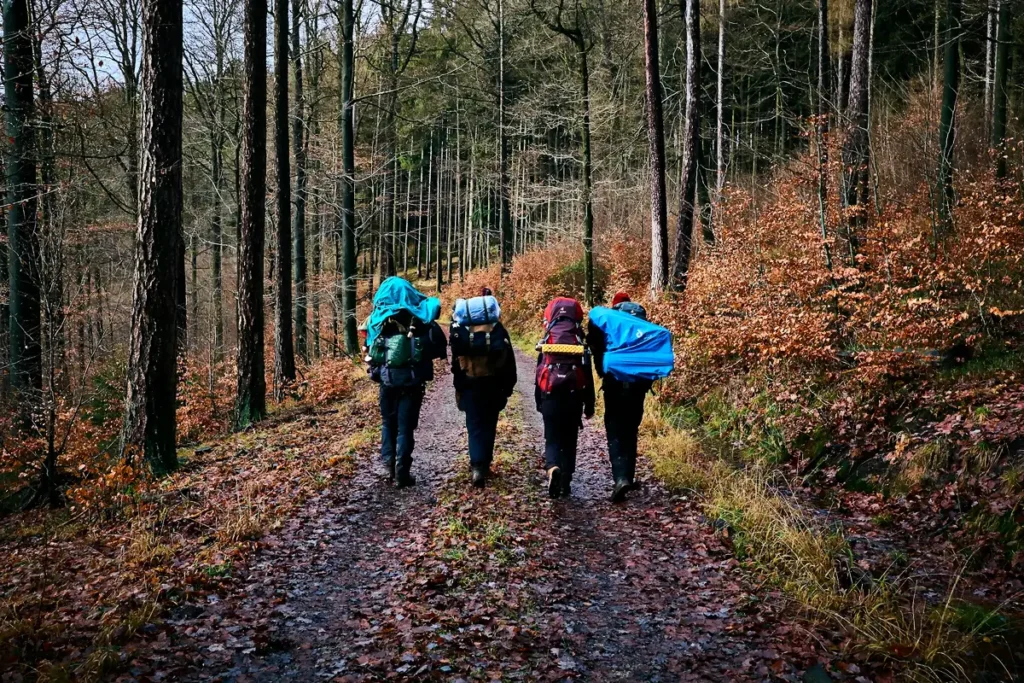
Gear for hiking vs. backpacking
Essentials for Day Hikes
Day hikes are simpler when it comes to gear. Here’s what a typical day hike pack might include:
- Water: Hydration is crucial. Many trails have no water sources.
- Snacks: Lightweight, high-energy foods like nuts, fruits, and energy bars.
- Map: Even with GPS, a paper map can save the day when devices fail.
- Extra Clothing Layers: The weather can change quickly.
- Small Backpack: Light and easy to carry, big enough for essentials.
- Comfortable Hiking Boots or Shoes: Lightweight with a good grip.
- Optional Trekking Poles: Can relieve pressure on your knees and help with balance.
- Rain Jacket or Windbreaker: For sudden rain or wind.
- Sunglasses and Insect Repellent: Protect yourself from the elements and bugs.
With these essentials, you’re ready for a fun-filled day hike. A light pack means more freedom to explore.
Backpacking Essentials
Backpacking requires a more detailed approach. Here’s what you typically need:
- Sturdy Backpack: Holds all your gear comfortably.
- Tent or Shelter: An ultralight tent or hammock setup.
- Sleeping Bag and Sleeping Pad: For a good night’s rest. Ultralight, compressible options are ideal.
- Cooking Equipment: Lightweight stove, fuel, and cooking utensils.
- Food Storage: Bear canisters or food sacks.
- Water Filtration System: Clean water isn’t always available.
- Multi-day Food Supplies: Non-perishable food to keep energy levels high.
- Extra Clothing Layers: Varied clothes for changing weather conditions.
- Navigation Tools: GPS, maps, compass.
- Personal Hygiene Items: Biodegradable soap, toothbrush, trowel for catholes.
- Repair Kits: Duct tape, multi-tool, sewing kit.
Backpacking gear isn’t just for convenience—it often becomes crucial to your safety and well-being.
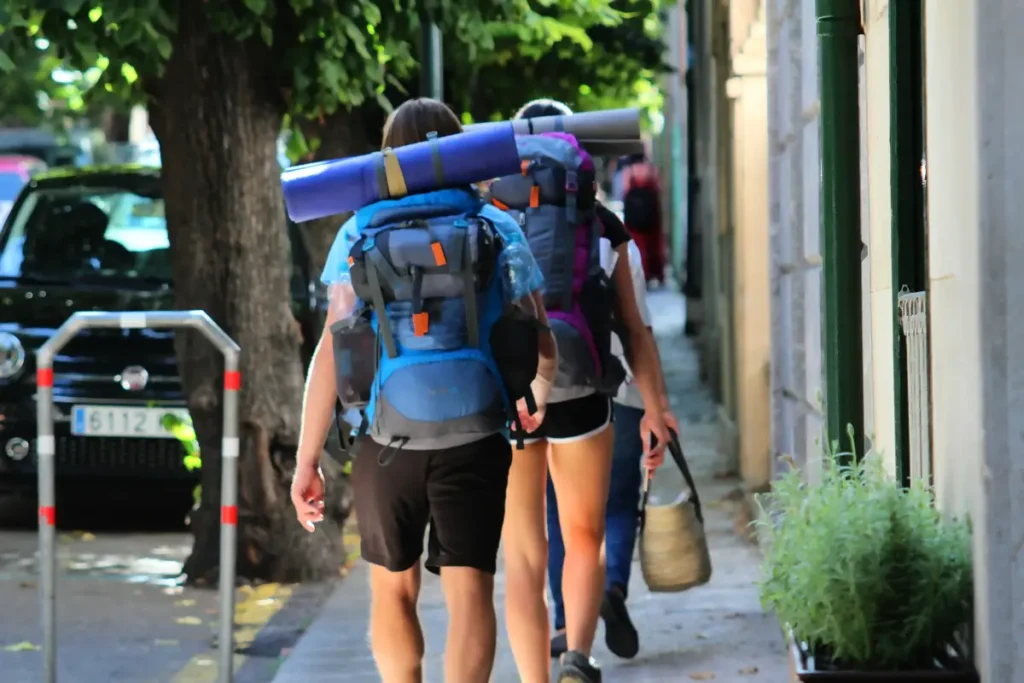
Types of Backpacking and Related Activities
Thru-Hiking
Maybe you’ve heard of folks hiking grand stretches like the Appalachian Trail (AT) or the Pacific Crest Trail (PCT). If so, you’re familiar with thru-hiking. Thru-hiking is backpacking with a mission—to hike an entire long trail in one continuous journey. Here’s what sets thru-hiking apart:
- Lightweight Packs: Carrying less weight means more miles and fewer backaches. Prioritizing ultralight gear is a must.
- Focus on Mileage: Unlike those day hikes where you linger at every scenic overlook, thru-hiking is about covering lots of ground every day.
- Versatile Gear: From wicked hot days to freezing nights, your gear needs to handle varied conditions.
- Gear Swaps: Shoes wearing out? Changing seasons? Thru-hikers often send gear to planned pick-up points ahead on the trail.
Trekking
Trekking involves long-distance adventures through challenging, remote regions.
Key points:
- Duration: Treks can last from several days to months.
- Diverse Landscapes: Lush valleys, rugged mountains, and more.
- Personal Growth: Tests resilience and self-reliance.
- Higher Fitness Level and Planning: Pushes physical limits and requires meticulous preparation.
Mountaineering
Mountaineering involves high-altitude climbs, like Mont Blanc and Kilimanjaro. Key characteristics are:
- Technical Skills: Mastery of equipment like crampons, ropes, and harnesses.
- Safety Protocols: Ice climbing, avalanche rescue training.
- Rugged Terrain: Scaling rocky faces and navigating glaciers.
Bikepacking
Let’s switch gears—literally—with bikepacking. Bikepacking involves exploring nature on a bicycle.
Key points:
- Long-Distance Travel: Covers vast stretches effortlessly.
- Cycling Gear: Specialized bikepacking bags, multi-tools, and repair kits.
- Two-Wheeled Expeditions: Combines the beauty of nature with the thrill of cycling.
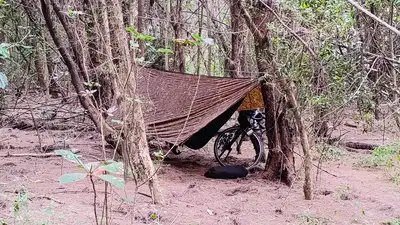
Final Thoughts
Embarking on a journey, be it a day hike or a multi-day backpacking adventure, offers a unique connection with nature. From the simplicity of day hikes to the immersive challenge of thru-hiking, and the technical thrill of mountaineering to the fast-paced exploration of bikepacking, there’s an adventure waiting for everyone.


